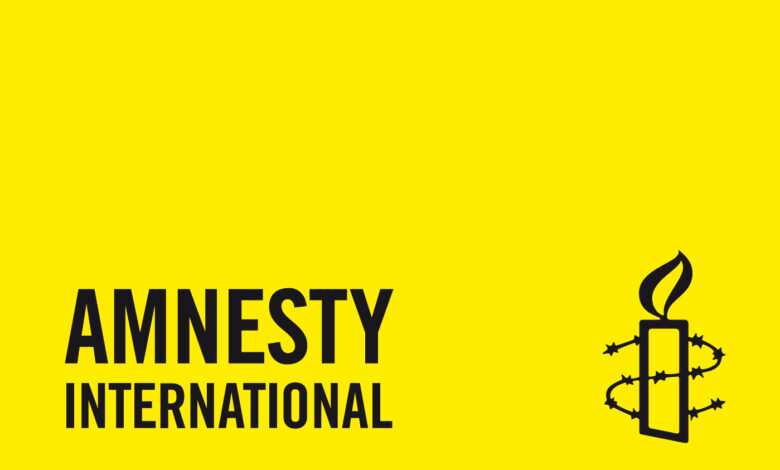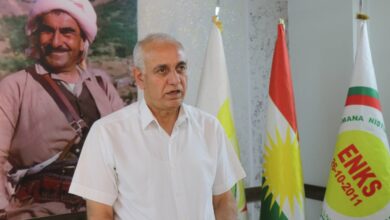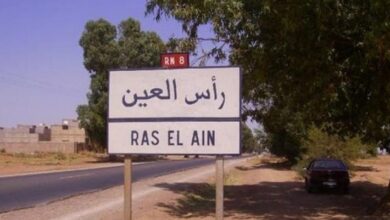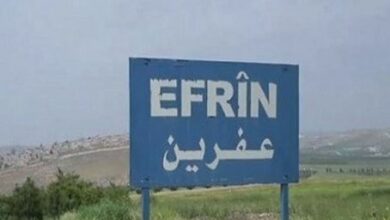
SYRIA 2015/2016
Government forces and non-state armed groups committed war crimes, other violations of international humanitarian law and gross human rights abuses with impunity in the internal armed conflict. Government forces carried out indiscriminate attacks and attacks that directly targeted civilians, including bombardment of civilian residential areas and medical facilities with artillery, mortars, barrel bombs and, reportedly, chemical agents, unlawfully killing civilians. Government forces also enforced lengthy sieges, trapping civilians and depriving them of food, medical care and other necessities. Security forces arbitrarily arrested and continued to detain thousands, including peaceful activists, human rights defenders, media and humanitarian workers, and children. Some were subjected to enforced disappearance and others to prolonged detention or unfair trials. Security forces systematically tortured and otherwise ill-treated detainees with impunity; thousands of detainees died as a result of torture and other ill-treatment between 2011 and 2015. Non-state armed groups that controlled some areas and contested others indiscriminately shelled and besieged predominantly civilian areas. The armed group Islamic State (IS) besieged civilians in government-controlled areas, carried out direct attacks on civilians and indiscriminate attacks including suicide bombings, alleged chemical attacks and other bombardment of civilian areas, and perpetrated numerous unlawful killings, including of captives. US-led forces carried out air strikes on IS and other targets, in which scores of civilians were killed. In September, Russia commenced air strikes and sea-launched cruise missile attacks on areas controlled by armed opposition groups and on IS targets, in which hundreds of civilians were killed. By the end of the year, the UN estimated that the conflict had caused the deaths of 250,000 people, forced 7.6 million people to become internally displaced and led 4.6 million people to become refugees abroad.
Background
Syria’s internal armed conflict, which began after anti-government protests in 2011, raged throughout the year. Government forces and their allies, including Lebanese Hizbullah and Iranian fighters, controlled the centre of the capital Damascus and much of western Syria, while an array of non-state armed groups controlled or contested other areas, sometimes fighting each other. They included groups primarily fighting government forces, such as those affiliated to the Free Syrian Army and others including Ahrar al-Sham; Jabhat al-Nusra, the Syrian branch of al-Qa’ida; IS; and forces of the Autonomous Administration established in predominantly Kurdish enclaves of northern Syria.
Divisions within the UN Security Council impeded efforts to pursue peace, but the Council adopted several resolutions on Syria. In February, Resolution 2199 called on states to prevent the transfer of arms and funds to IS and Jabhat al-Nusra. In March, Resolution 2209 condemned the use of chlorine as a weapon of war and said that those responsible for its use should be held accountable, while supporting the use of military action, economic sanctions or other means against those who did not comply. In August, Resolution 2235 called for a Joint Investigative Mechanism to determine responsibility for the use of chemical weapons in Syria.
Efforts by the UN to broker peace, incrementally via a ceasefire in Aleppo or through other multi-party talks, were unsuccessful. International negotiations known as the “Vienna Process” were set to lead to direct talks between the Syrian government and opposition forces in January 2016.
The independent international Commission of Inquiry on the Syrian Arab Republic, established by the UN Human Rights Council in 2011, continued to monitor and report on violations of international law committed by the parties to the conflict, although it remained barred by the government from entering Syria.
A US-led international coalition of states continued to carry out air strikes against IS and certain other armed groups in northern and eastern Syria. The attacks, which began in September 2014, reportedly killed scores of civilians. Russia began air strikes in support of the Syrian government on 30 September, nominally against IS but mostly attacking armed groups fighting both the government and IS and in October fired cruise missiles at targets in Syria. The Russian attacks reportedly killed hundreds of civilians.
Several suspected attacks by Israel inside Syria targeted Hizbullah, Syrian government positions and other fighters.
Internal armed conflict – violations by government forces
Indiscriminate and direct attacks on civilians
Government and allied forces continued to commit war crimes and other serious violations of international law, including direct attacks on civilians and indiscriminate attacks. Government forces repeatedly attacked areas controlled or contested by armed opposition groups, killing and injuring civilians and damaging civilian objects in unlawful attacks. They carried out indiscriminate attacks and direct attacks on civilian residential areas, including artillery shelling and air strikes, often using unguided, high-explosive barrel bombs dropped from helicopters. The attacks caused numerous civilian deaths and injuries, including of children. For example, a barrel bomb attack on Baideen, Aleppo governorate, on 5 February killed at least 24 civilians and injured 80. An air strike on the Sahat al-Ghanem market in Duma on 16 August killed around 100 civilians and wounded hundreds. Aerial bombing accounted for half of all civilian fatalities, according to the Violations Documentation Center, a Syrian NGO.
Government forces also carried out dozens of suspected chlorine gas attacks in areas controlled by non-state armed groups, particularly in Idleb governorate, causing civilian casualties. In one attack on 16 March, government helicopters reportedly dropped barrels containing chlorine on and around Sermin, Idleb governorate, killing a family of five and injuring around 100 civilians.
Sieges and denial of humanitarian access
Government forces maintained prolonged sieges of predominantly civilian areas in and around Damascus, including Eastern Ghouta, Daraya and Yarmouk, exposing the residents to starvation and denying them access to medical care and other basic services, while subjecting them to repeated air strikes, artillery shelling and other attacks.
Government forces, including Lebanese Hizbullah fighters, began besieging Zabadani and nearby towns and villages in southwestern Syria in July, forcibly displacing thousands of civilians to Madaya, which government forces also besieged and bombarded indiscriminately, causing civilian casualties.
Attacks on medical facilities and workers
Government forces continued to target health facilities and medical workers in areas controlled by armed opposition groups. They repeatedly bombed hospitals and other medical facilities, barred or restricted the inclusion of medical supplies in humanitarian aid deliveries to besieged and hard-to-reach areas, and disrupted or prevented health care provision in these areas by detaining medical workers and volunteers. The NGO Physicians for Human Rights accused government forces of systematically attacking the health care system in areas controlled by armed opposition groups and of responsibility for the deaths of the vast majority of the 697 medical workers killed in Syria between April 2011 and November 2015.
Internal armed conflict – abuses by armed groups
Non-state armed groups committed war crimes, other violations of international humanitarian law and serious human rights abuses.
Use of indiscriminate weapons and direct attacks on civilians
IS forces carried out direct attacks on civilians as well as indiscriminate attacks. IS reportedly also launched chemical attacks using chlorine and mustard agents. The Syrian American Medical Society said that its staff treated more than 50 civilians with symptoms indicating exposure to chemicals after IS forces fired mortar and artillery shells into Marea, a town in Aleppo governorate, on 21 August. One baby died from the exposure.
IS forces repeatedly attacked Kurdish-controlled areas. At least 262 civilians were killed in direct attacks by IS on civilians in the town of Kobani on 25 June.
IS and other armed groups used imprecise explosive weapons including mortars and artillery shells in attacks on residential areas, killing and injuring civilians. In August, armed groups reportedly fired hundreds of mortar shells into Fu’ah and Kefraya, two predominantly Shi’a villages, and killed 18 civilians in indiscriminate attacks on Deraa city.
Unlawful killings
IS forces summarily killed captured government soldiers, members of rival armed groups, and media workers and other captured civilians. In areas of al-Raqqa, Deyr al-Zur and eastern Aleppo which it controlled, IS enforced its strict interpretation of Islamic law, carrying out frequent public execution-style killings, including of people they accused of apostasy, adultery or theft, or because of their real or perceived sexual orientation.
On 30 January, IS decapitated abducted Japanese journalist Kenji Goto and four days later burned to death captured Jordanian Air Force pilot Muath al-Kasasbeh. On 3 March, IS members reportedly threw a man from a tower in Tabqa, al-Raqqa governorate, and then stoned him to death because of his real or perceived sexual orientation
On 5 July in al-Raqqa, IS summarily killed Faisal Hussein al-Habib and Bashir Abd al-Ladhim al-Salem, two peaceful activists who had reportedly documented IS abuses.
On 5 July, IS released a video that showed some of its child soldiers apparently shooting dead captured government soldiers in front of a crowd in an amphitheatre in Palmyra. IS forces deliberately destroyed ancient temples and other cultural artefacts at Palmyra, a UNESCO World Heritage site, after capturing it in May. In August, IS decapitated Khaled al-Asaad, the head of antiquities at Palmyra, having detained him since May.
Other armed groups also committed unlawful killings. In June, Jabhat al-Nusra reportedly shot dead 20 civilians of the Druze faith at Kalb Loze, Idleb. Jaysh al-Islam summarily killed alleged IS members they had captured, according to images released from 25 June. In September, Jaysh al-Fateh fighters led by Jabhat al-Nusra summarily killed 56 captured government soldiers after seizing the Abu al-Dhuhr Air Base in Idleb on 9 September.
Sieges and denial of humanitarian access
IS forces besieged some 228,000 people in government-controlled western neighbourhoods of Deyr al-Zur city. Local activists said five civilians died in July from lack of food and medical care. IS closed health facilities and reportedly barred women medical workers from working in areas it controlled, curtailing civilians’ access to medical care.
For most of the year non-state armed groups also besieged some 26,000 people in Zahraa and Nobel, northwest of Aleppo.
Abductions
Several non-state armed groups including IS engaged in abductions and hostage-taking.
On 23 February, IS forces abducted some 253 civilians from mostly Assyrian villages along the Khabur river in al-Hasakeh. Some 48 were later released but there were fears for the fate of those still missing, particularly after IS released a video about the abductees in October showing three unidentified bodies.
There was no news of the fate or whereabouts of human rights defender Razan Zaitouneh, her husband Wa’el Hamada, Nazem Hamadi or Samira Khalil. The four were abducted by unidentified armed men on 9 December 2013. They were taken from the office of the Violations Documentation Center and Local Development and Small Projects Support Office in Duma, an area controlled by Jaysh al-Islam and other armed groups.
Internal armed conflict – abuses by the PYD-led Autonomous Administration
In northern Syria, an Autonomous Administration led by the Democratic Union Party (PYD) controlled the predominantly Kurdish Afrin, Kobani (also known as Ayn al-Arab) and Jazeera enclaves. The Administration’s security forces and police forcibly displaced people from 10 villages and towns, including Husseiniya in February, and prevented displaced residents from returning to their homes in Suluk, a town in al-Raqqa governorate, in July after forcing IS to withdraw from the area. They also carried out arbitrary arrests, detentions and unfair trials of suspected supporters of armed groups and others. The Administration’s security forces reportedly used child soldiers.
Attacks by international coalition forces
The US-led international coalition continued its air strikes against IS and certain other armed groups in northern and eastern Syria, which it had begun in September 2014. Some attacks resulted in civilian casualties. The Syrian Observatory for Human Rights reported that 243 civilians were killed in coalition attacks in Syria during the year. On 30 April, coalition air strikes on suspected IS targets in Bir Mahli, Aleppo governorate, reportedly killed 64 civilians.
Attacks by Russian forces
Russia intervened in the conflict in support of the Syrian government, beginning a campaign of air strikes on 30 September primarily against armed opposition groups. The same day, Russian air strikes on Talbiseh, Zafraneh and Rastan in Homs governorate reportedly killed at least 43 civilians.
On 7 October, Russian forces fired cruise missiles into Syria from ships in the Caspian Sea. One missile strike killed five civilians and destroyed at least 12 homes in Darat Izza, Aleppo governorate. On 20 October, two suspected Russian air strikes hit the immediate vicinity of Sermin field hospital in Idleb governorate, killing 13 civilians and putting the hospital out of action. On 29 November, a suspected Russian war plane fired three missiles into a busy market in Ariha, Idleb governorate, killing 49 civilians.
Altogether, the Russian attacks reportedly killed at least 600 civilians and struck at least 12 medical facilities in areas controlled or contested by non-state armed groups.
Refugees and internally displaced people
The continuing conflict caused massive population displacement. Some 4.6 million people fled Syria between 2011 and the end of 2015, including 1 million who became refugees during 2015, according to UNHCR, the UN refugee agency. Some 7.6 million, according to the UN Office for the Coordination of Humanitarian Affairs, were internally displaced within Syria. Half of those displaced were children. Turkey, Lebanon and Jordan, the countries hosting the most refugees from Syria, restricted access to refugees fleeing the continuing conflict, exposing them to further attacks and deprivation in Syria. Lebanon and Jordan continued to block the entry of Palestinian refugees from Syria, rendering them especially vulnerable. At least 500,000 Syrian refugees crossed by water or land into Europe but many European countries and other countries in the region failed to accommodate a fair share of those fleeing.
Enforced disappearances
Government forces held thousands of detainees without trial, often in conditions that amounted to enforced disappearance. Tens of thousands of people remained subjected to enforced disappearance, some since the outbreak of the conflict in 2011. They included peaceful critics and opponents of the government as well as family members detained in place of relatives wanted by the authorities.
Those who remained forcibly disappeared since 2012 included Abd al-Aziz al-Khayyir, Iyad Ayash and Maher Tahan, members of the National Co-ordination Body for Democratic Change, who were arrested at an Air Force Intelligence checkpoint on 20 September 2012.
Torture and other ill-treatment
Torture and other ill-treatment of detainees by government security and intelligence agencies and in state prisons remained systematic and widespread. Torture and other ill-treatment continued to result in a high incidence of detainee deaths.
Salaheddin al-Tabbaa, a 22-year-old student and Syrian Arab Red Crescent volunteer, died in detention in April according to a death certificate the authorities gave to his family in July. The certificate said he died of a heart attack. He was in good health when government security forces detained him in September 2014. The authorities did not return his body to his family, saying it had been buried.
Arbitrary arrests and detentions
Tens of thousands of civilians, including peaceful activists, were detained by government security forces. Many were held in prolonged pre-trial detention, where they were tortured and otherwise ill-treated. Others received unfair trials before the Anti-Terrorism Court or Military Field Courts.
Bassel Khartabil, a peaceful online freedom of expression activist, remained arbitrarily detained since his arrest in March 2012. He was taken before a Military Field Court very briefly in late 2012 but was not told the outcome of the hearing. On 3 October 2015 he was moved from Adra Prison to an undisclosed location.
The authorities released human rights defender Mazen Darwish, head of the Syrian Centre for Media and Freedom of Expression, on 10 August, and Hani al-Zitani and Hussein Gharir, two members of the Centre, in July. All three had been held since February 2012 and were on trial before the Anti-Terrorism Court. The charges against them were later dropped.
Death penalty
The death penalty remained in force for many offences but few details emerged of death sentences passed, and there was no information on executions.
The Anti-Terrorism Court reportedly sentenced to death 20 detainees held at Hama central prison for engaging in peaceful protests after grossly unfair trials in May and June.
www.amnesty.org




